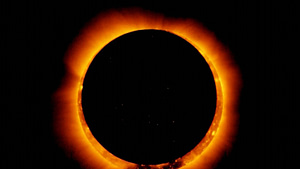The news that “Tesla in Guangzhou Chaozhou ‘out of control’ caused 2 deaths and 3 injuries” once again pushed Tesla to the forefront.
A few days ago, after a Tesla Model Y in Chaozhou, Guangdong failed to park on the side of the road, it ran 2.6 kilometers and hit multiple vehicles, resulting in 2 deaths and 3 injuries. On November 13, the car owner’s family claimed through social media that the car owner had more than 20 years of driving experience and had slammed on the brakes but failed to slow down when the accident occurred. It is hoped that the relevant departments will investigate the cause of the accident as soon as possible.
“It can be seen from the existing accident video that the brake lights have not been lit for a long time during the high-speed driving of the vehicle, which is consistent with the situation reflected in the background data.” On November 13, Tesla officially responded to the “Daily Economic News” reporter said in an interview.
“At present, we and the police are seeking a third-party identification agency for identification to restore the truth of the accident.” Tesla China’s customer service staff said in an interview with reporters that if necessary, Tesla will actively provide necessary assistance.
It can be seen from a video along the line of the accident posted by a self-proclaimed family member of the accident vehicle whose Weibo name is “Zhan Chubi”, at 6:42 am on November 5th, the accident vehicle slowly pulled over in front of a store to prepare to stop. The parking space tail light is on. However, after pulling over, the vehicle did not stop, but turned left and drove on the road again, and then turned on the “drag racing” mode. On the way, the accident vehicle collided with a three-wheeled electric vehicle, a two-wheeled electric vehicle, and a bicycle, resulting in 2 deaths and 3 injuries.
In response to the “misstep pedal” raised by netizens, “Zhan Chubi” responded: “The total distance from the loss of control of the vehicle to the collision and parking is 2.6 kilometers, and the owner was a professional truck driver, and this electric car is usually used by him. , at that time (the owner) was in good spirits and did not drive under the influence of alcohol or drugs.”
“Zhan Chubi” emphasized that the owner of the accident vehicle had been stepping on the brakes on the way, but the vehicle did not slow down, the brake failure caused the accident, and the accident vehicle had a “brake failure” problem.
“The background data of the accident vehicle we retrieved shows that the owner did not brake the whole process.” A staff member of a Tesla experience store in Beijing said in an interview with reporters that the biggest difference between electric vehicles and fuel vehicles is that the acceleration and response are very fast.
Tesla China officials also replied to reporters that the background data showed that the switch of the accident vehicle was deeply pressed for a long time and kept at 100% for a long time; the accident vehicle did not step on the brakes during the whole process; the driver briefly pressed the brake four times during the driving of the accident vehicle. Press the P button and release it quickly, and at the same time, the brake light also turns on and off quickly.
In fact, since June 2020 to the present, there have been frequent reports about Tesla’s “brake failure” accident. Such incidents occurred in Jiangxi, Shanghai, Zhejiang, Sichuan, Beijing, Jiangsu, Shenzhen, and other places. Tesla’s official investigation into the cause of such accidents is mostly attributed to the “wrong brakes” of the car owner. The EDR data of the involved vehicle has become an important breakthrough in investigating the cause of the accident.
According to public information, EDR is mainly used to record the key data of the car’s operation in the three stages before the collision, during the collision, and after the collision, such as vehicle speed, vehicle collision acceleration, the steering angle of the steering wheel, engine operating status, airbag status, and driving assistance. Information such as the system and the driver’s reaction when the event occurs. After the accident, whether the EDR data of the vehicle involved can be tampered with has become the focus of netizens’ attention.
According to the requirements of the national standard GB 39732-2020 “Automotive Event Data Recording System”, EDR data should be recorded in non-volatile memory; after the event, the data recorded by EDR should be able to be extracted, and the data should be prevented from being tampered with or deleted.
“Although it is not without probability, EDR data is currently relatively difficult to be tampered with and requires cooperation in programming.” Meng Wei, an engineer at the Shanghai Auto Parts Testing Laboratory, said in an interview with the media, “Tesla does not have enough motivation for taking this risk, because changing the data is not as simple as the car owner thinks, just changing a number. It is necessary to list the sampling points of each frame separately, and then write a reasonable number into it, and at the same time let the event, speed, throttle Pedal opening seems reasonable, it’s not very simple.”
Another interesting question in this accident is: Has the Tesla model involved suffered a “brake failure”?
Since the electric vehicle and the traditional fuel vehicle use the vacuum generated by the engine as the vacuum source of the vacuum booster, the driving motor of the electric vehicle cannot generate the vacuum source. Therefore, it needs to use brake-by-wire to generate electronic actions to provide the driver with braking assistance and reduce the pedal force required to step on the pedal. According to public information, the linear braking system on the Tesla model is the Bosch iBooster system.

According to the product description of the Bosch iBooster solution, the system employs a double fail-safe mode. The first level of safety failure mode is that when the iBooster system fails completely, the vehicle will be provided with braking assistance by ESP (Electronic Stability System); if the on-board power supply cannot run at full load, the iBooster system will work in an energy-saving mode. The second-level safety failure mode is that in the complete power-off mode, the iBooster system can achieve braking through purely mechanical pressure build-up, which means that under this condition, the driver can use the pure hydraulic mode without a brake booster. The wheels apply the brakes to bring the vehicle to a safe stop. As of press time, the relevant person in charge of Bosch China has not responded to this.
However, at the Bosch China press conference in 2021, Dr. Volkmar Denner, Chairman of the Board of Directors of Bosch Group, said when answering questions from the live media: “Bosch guarantees that the products are safe and effective, and there will be no problems.”
Chen Yudong, President of Bosch China, also said: “iBooster, as a star product of Bosch, is not only supplied to Tesla, but also to manufacturers of other brands. For a long time, only Tesla has had problems, and we guarantee that the products will not have problems .”
Dr. Yang Jun from the School of Automotive and Transportation Engineering of Jiangsu Institute of Technology once said in an interview with Science and Technology Daily that the brake-by-wire system may also have fatal problems that cannot be ignored, that is, there will be errors, delays, and interruptions in the process of electrical signal transmission. , which is very likely to cause brake failure, sudden acceleration, and other dangers.
“The advantages of the brake-by-wire system are many, but this electronic control system may also bring great danger to the safety of drivers and passengers and other people on the road. Related literature studies have shown that when various electronic drive control units, such as BBW (Automotive Electric Braking System), EHB (Electric Hydraulic Braking System), SBW (Shift-by-Wire System), ABS (Anti-lock Braking), ESP, etc., the degree of danger in the event of failure, the brake-by-wire system The degree of danger has increased significantly.” Yang Jun said that reliability and safety are still major challenges for the brake-by-wire system.



